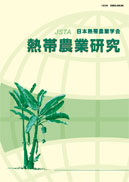Volume 16, Issue 1
Displaying 1-10 of 10 articles from this issue
- |<
- <
- 1
- >
- >|
Regular Paper
-
2023Volume 16Issue 1 Pages 1-5
Published: 2023
Released on J-STAGE: November 01, 2023
Download PDF (540K) -
2023Volume 16Issue 1 Pages 6-13
Published: 2023
Released on J-STAGE: November 01, 2023
Download PDF (444K) -
2023Volume 16Issue 1 Pages 14-20
Published: 2023
Released on J-STAGE: November 01, 2023
Download PDF (620K)
Short Report
-
2023Volume 16Issue 1 Pages 21-24
Published: 2023
Released on J-STAGE: November 01, 2023
Download PDF (286K)
Symposium
-
2023Volume 16Issue 1 Pages 25
Published: 2023
Released on J-STAGE: November 01, 2023
Download PDF (162K) -
2023Volume 16Issue 1 Pages 26-28
Published: 2023
Released on J-STAGE: November 01, 2023
Download PDF (558K) -
2023Volume 16Issue 1 Pages 29-30
Published: 2023
Released on J-STAGE: November 01, 2023
Download PDF (251K) -
2023Volume 16Issue 1 Pages 31-32
Published: 2023
Released on J-STAGE: November 01, 2023
Download PDF (347K) -
2023Volume 16Issue 1 Pages 33-34
Published: 2023
Released on J-STAGE: November 01, 2023
Download PDF (252K) -
2023Volume 16Issue 1 Pages 35-37
Published: 2023
Released on J-STAGE: November 01, 2023
Download PDF (415K)
- |<
- <
- 1
- >
- >|
